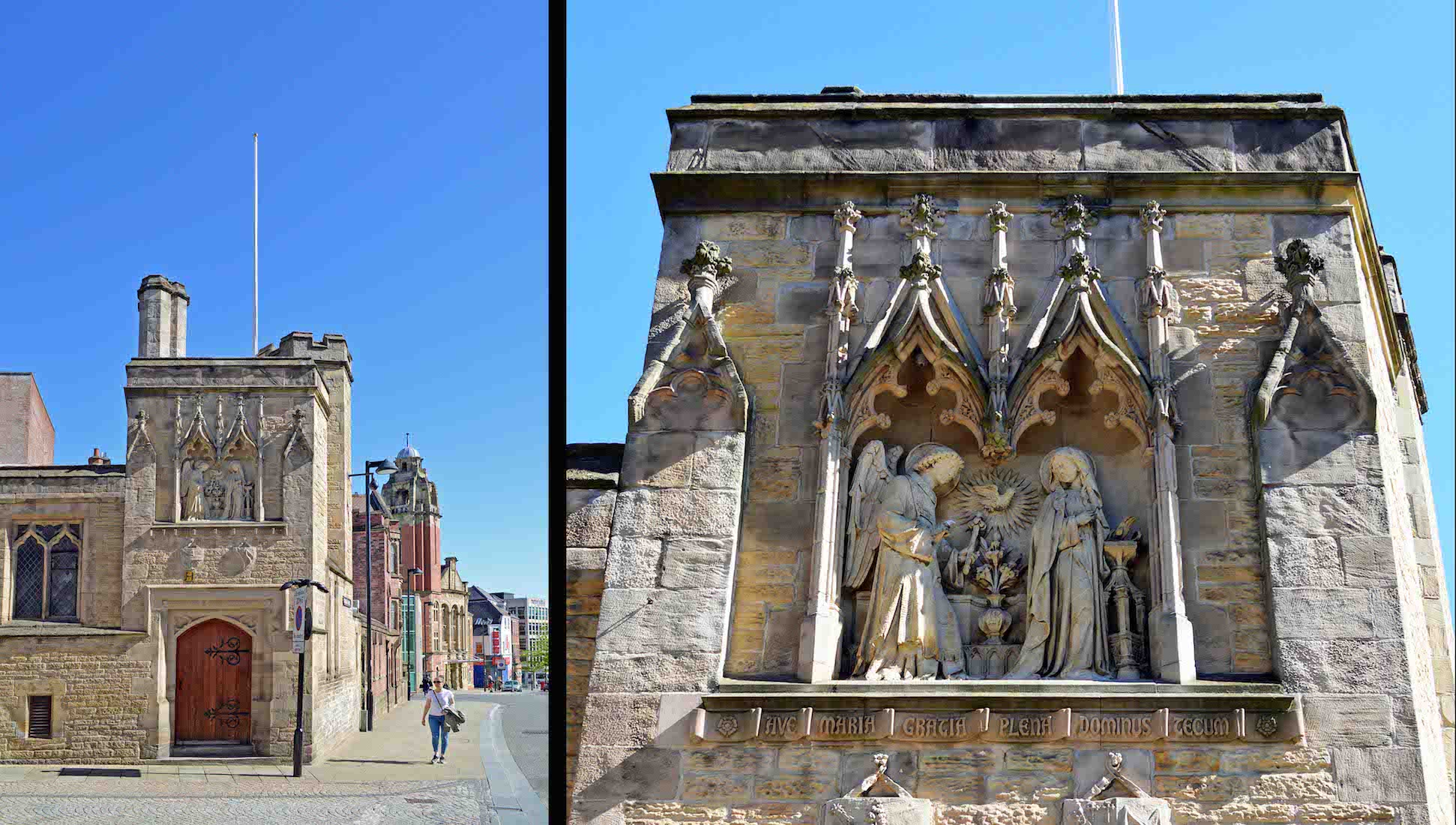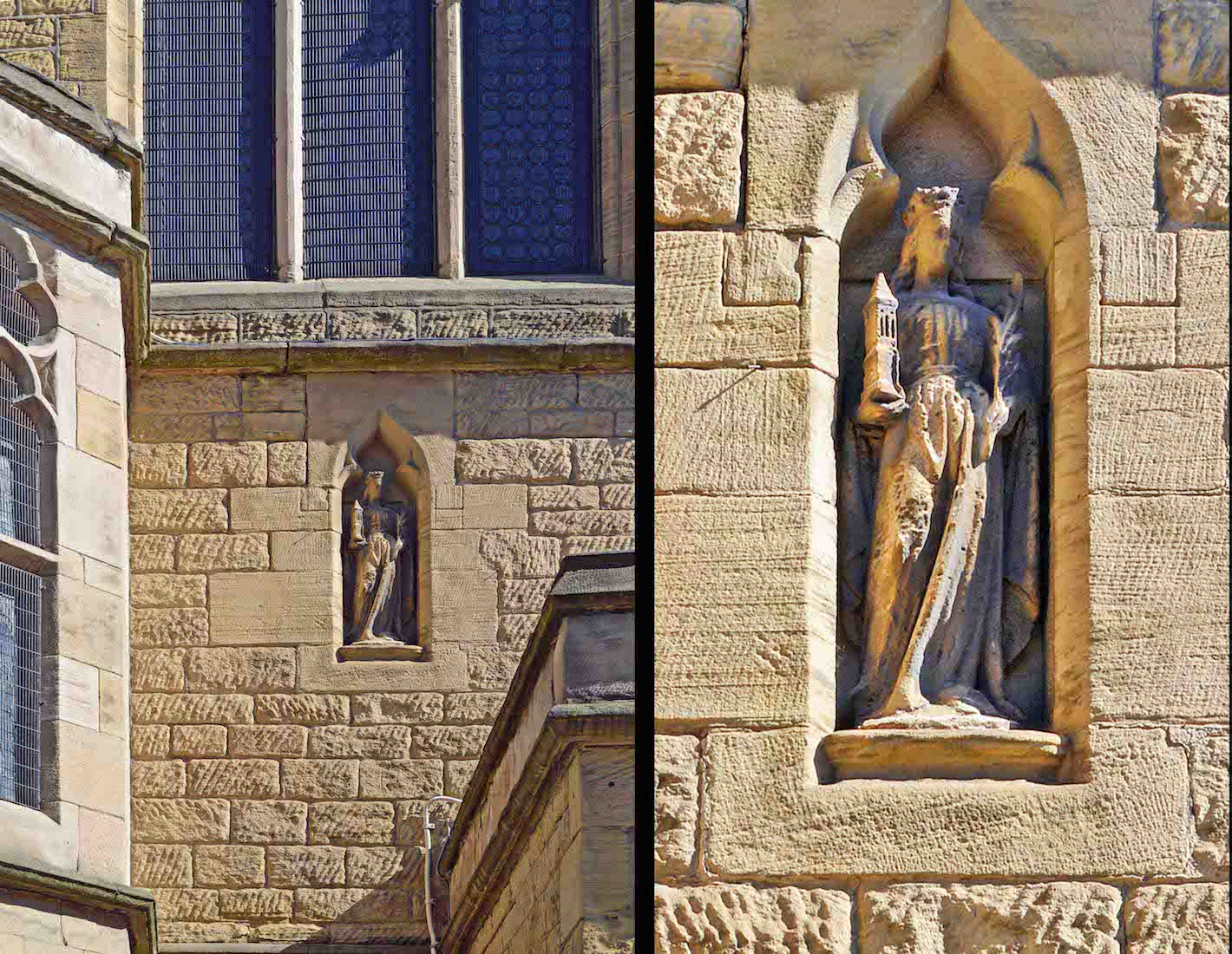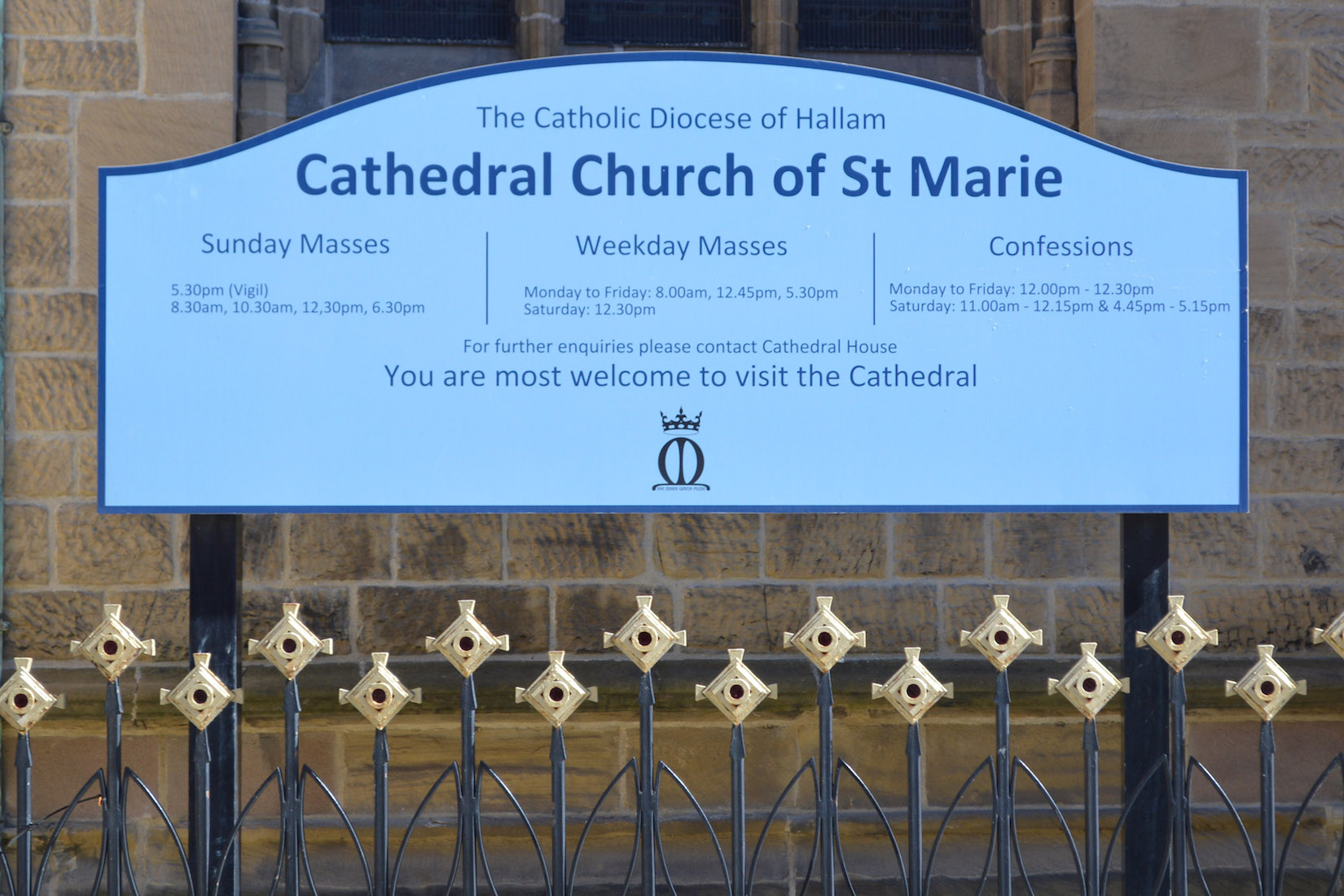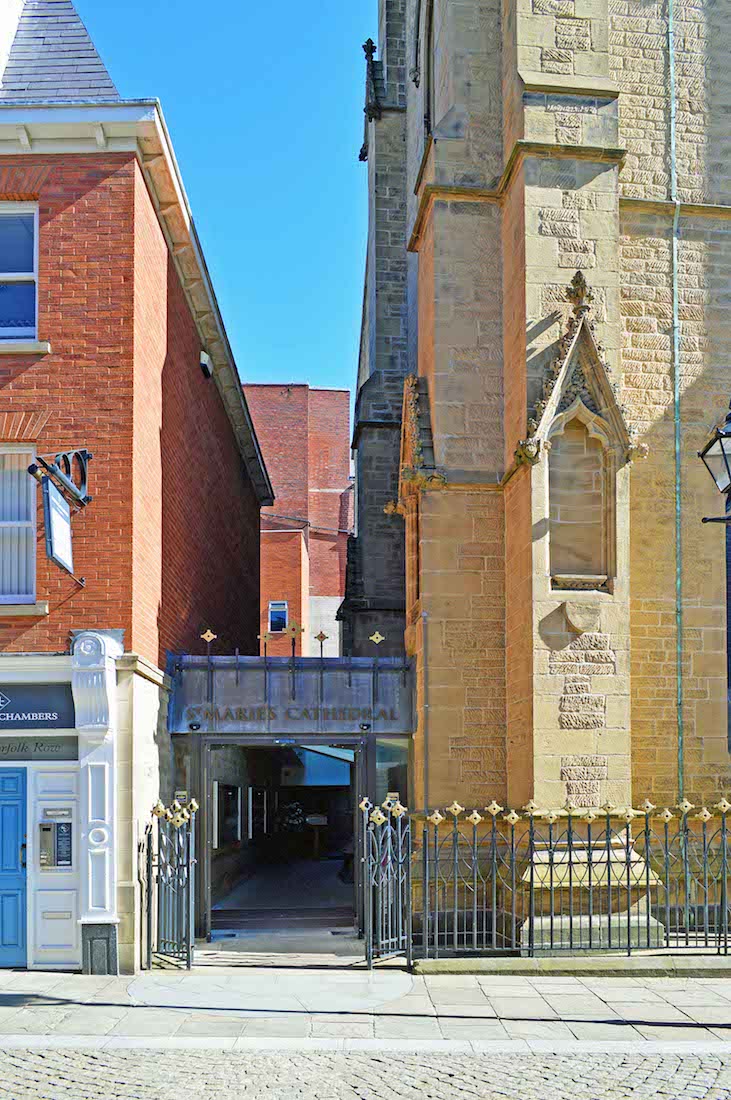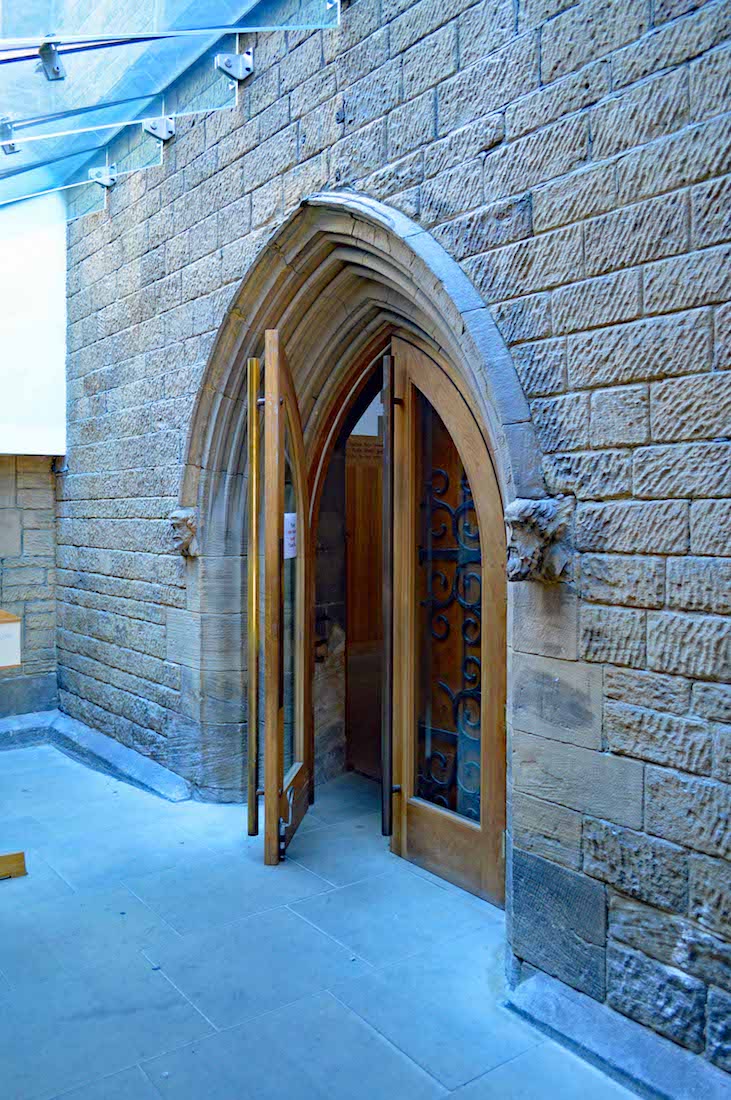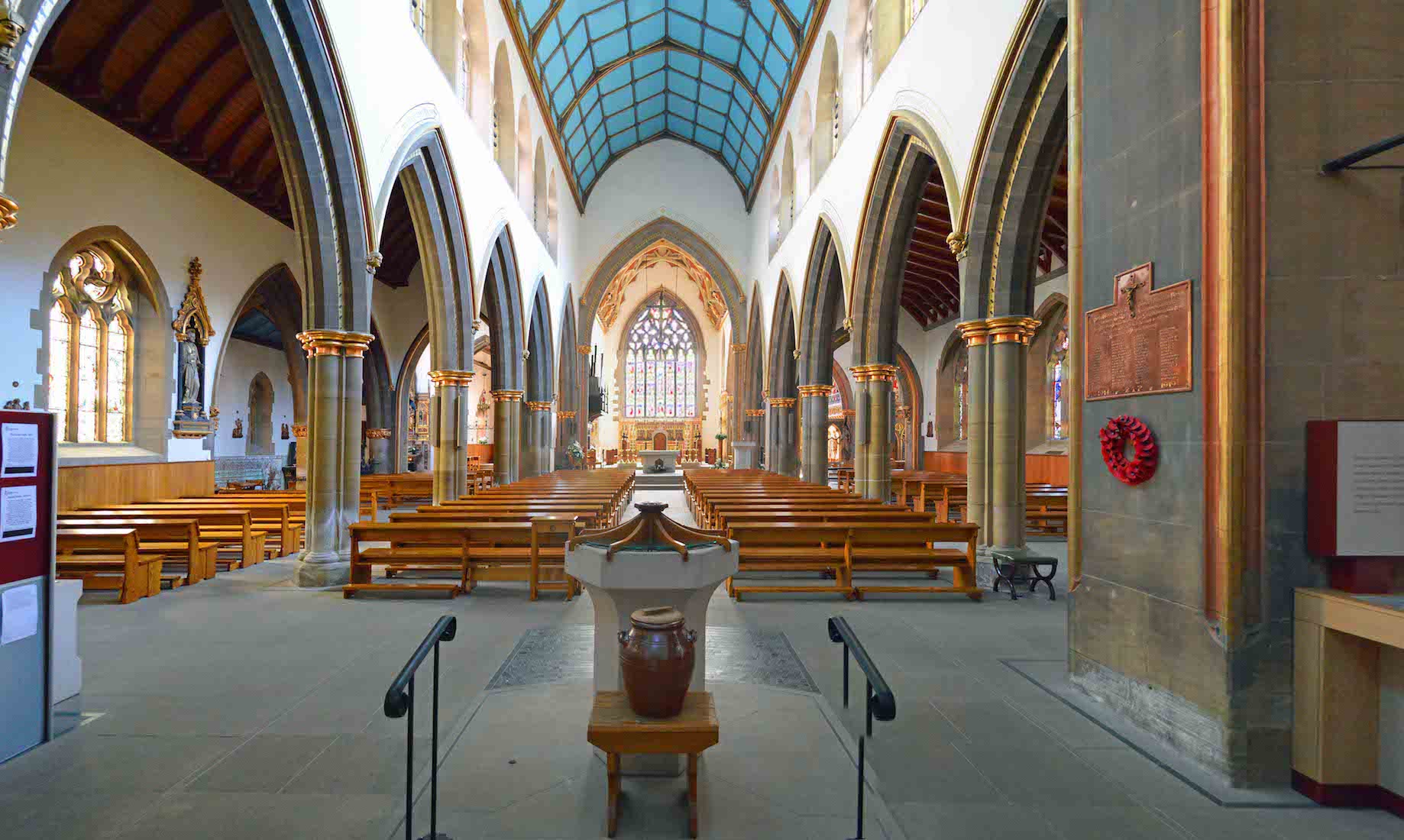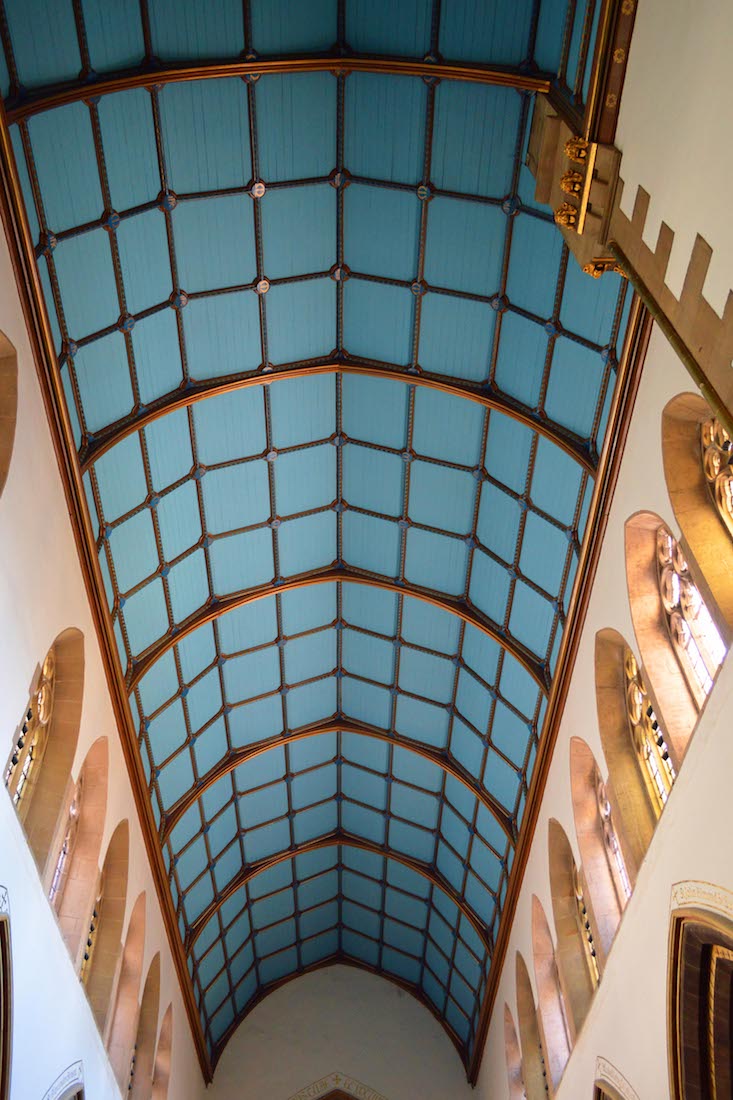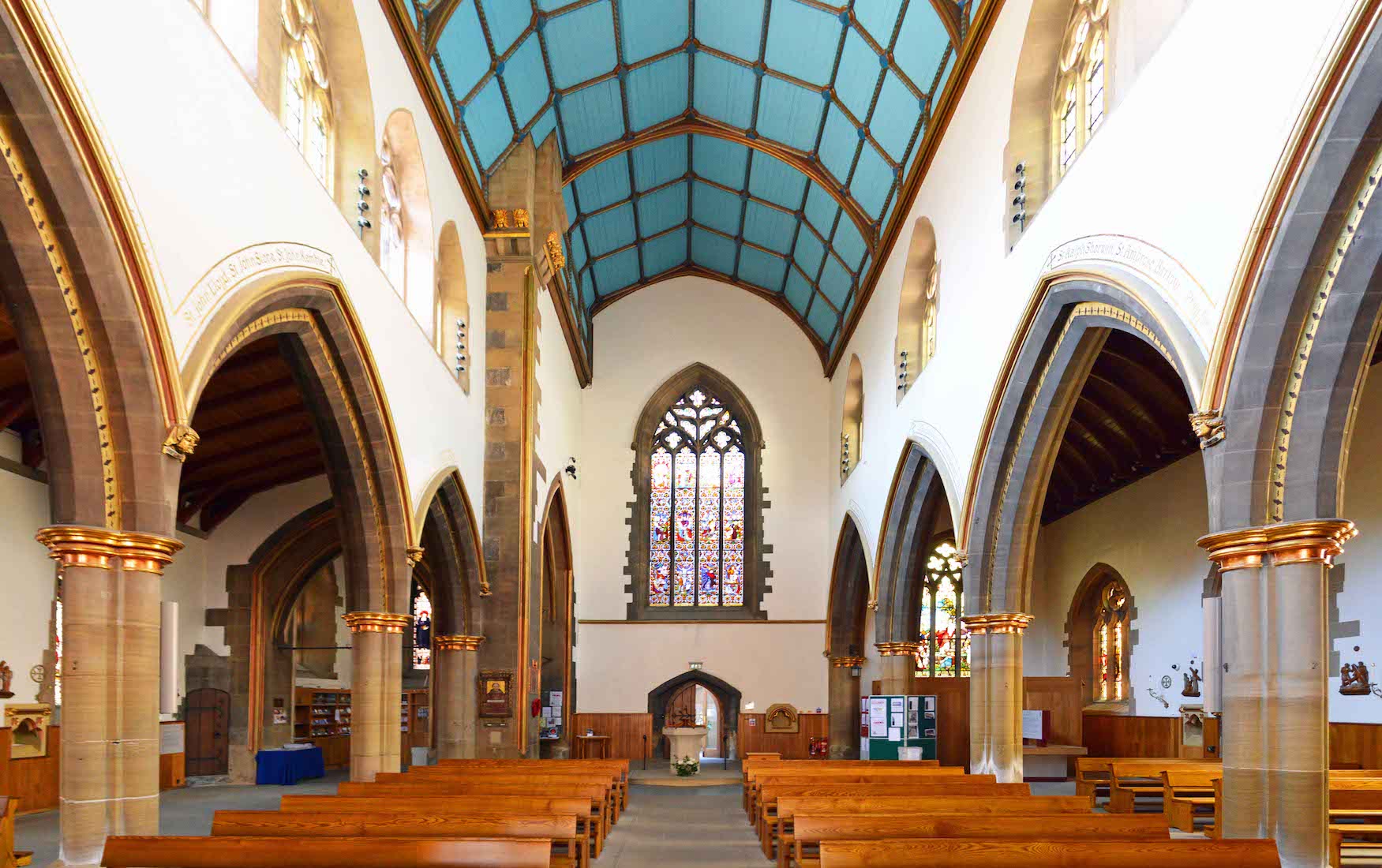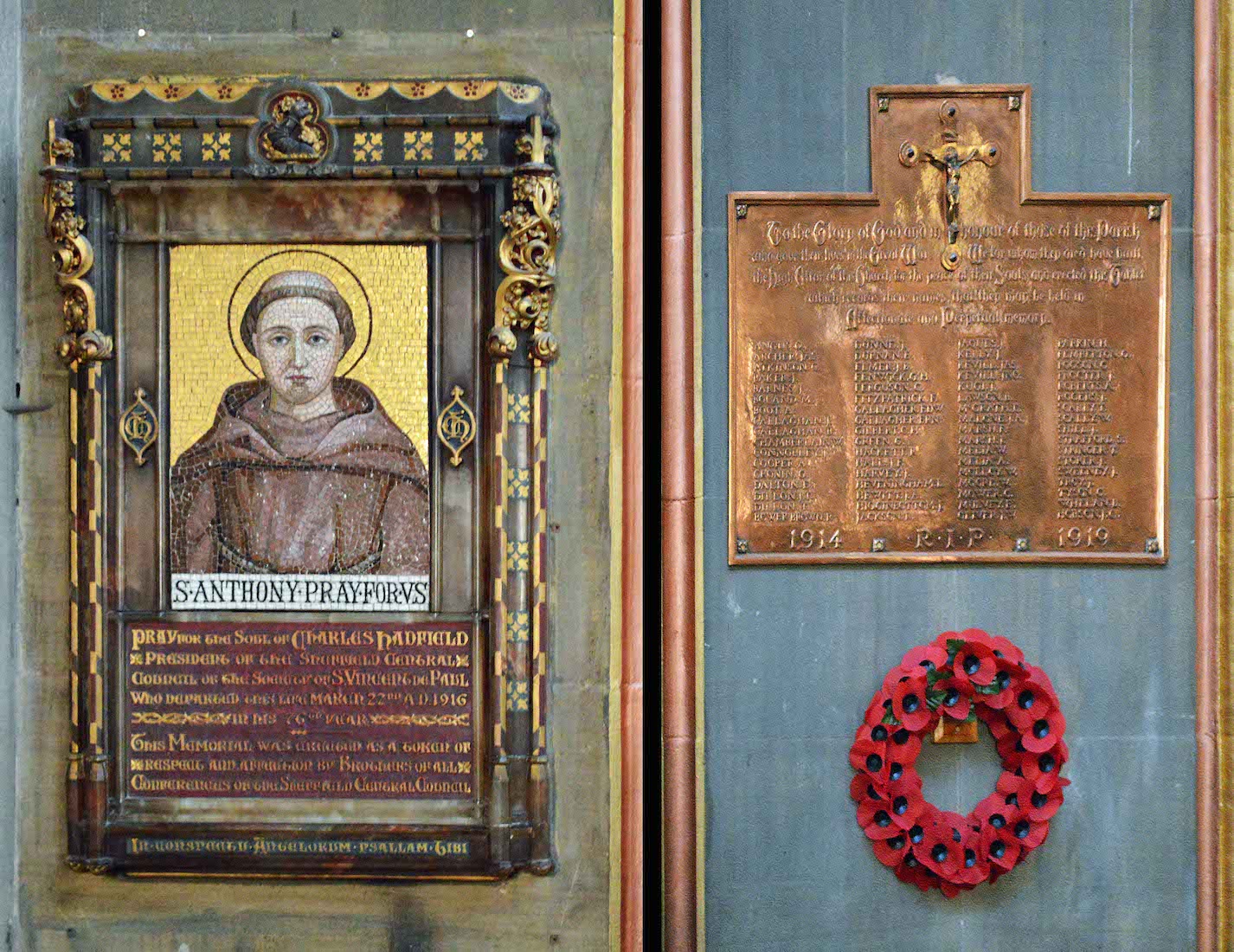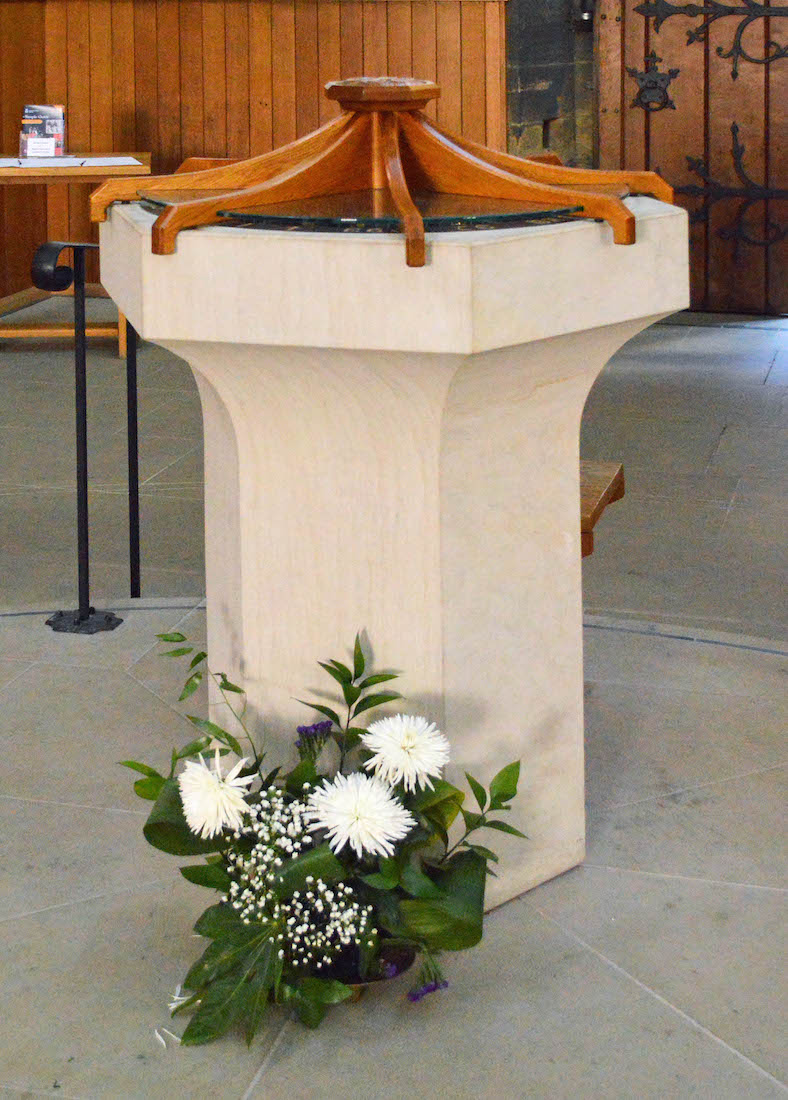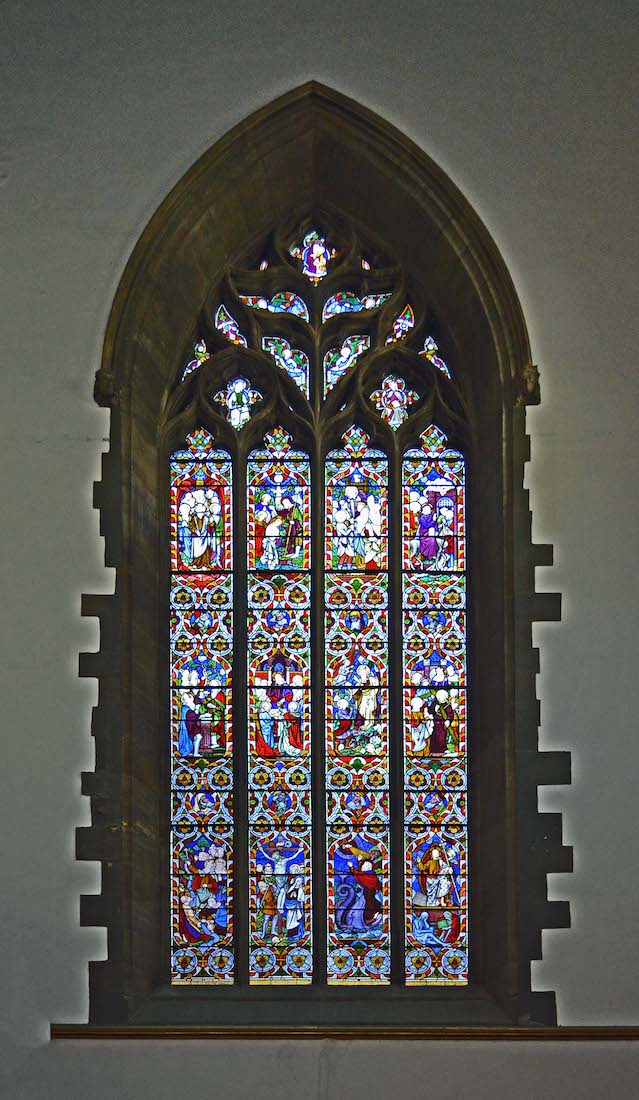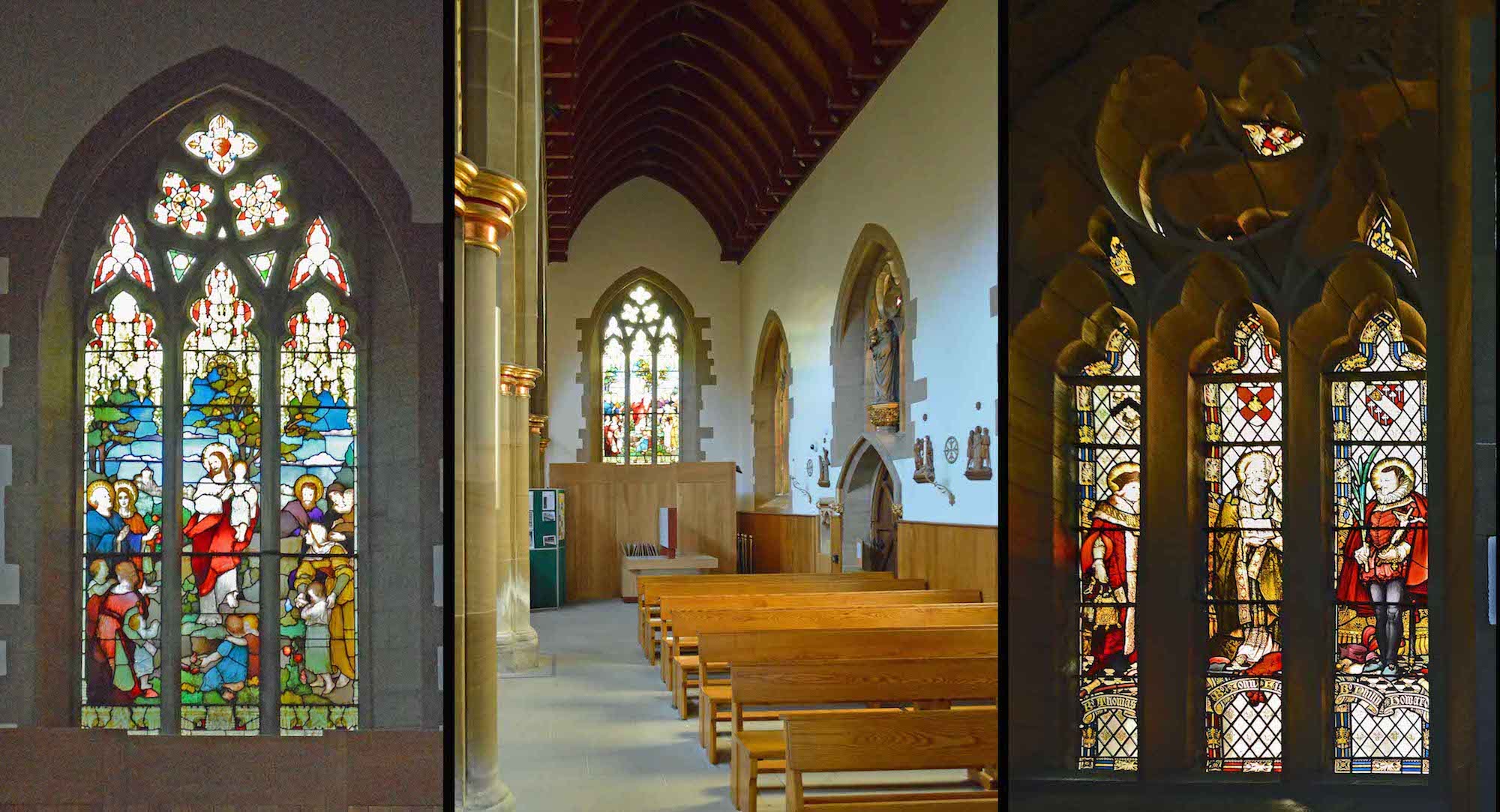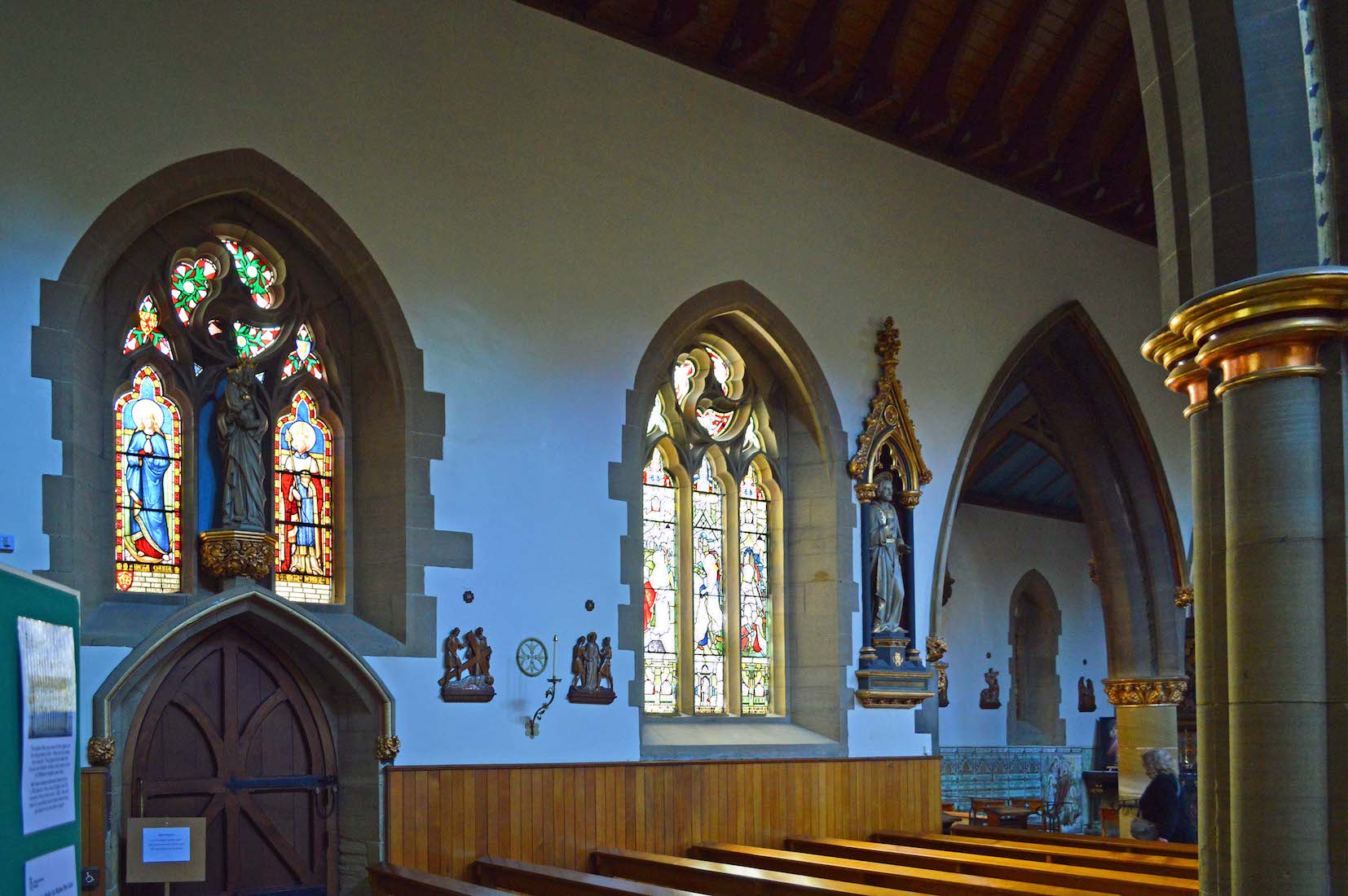1. CATHEDRAL VIEW FROM NORFOLK STREET
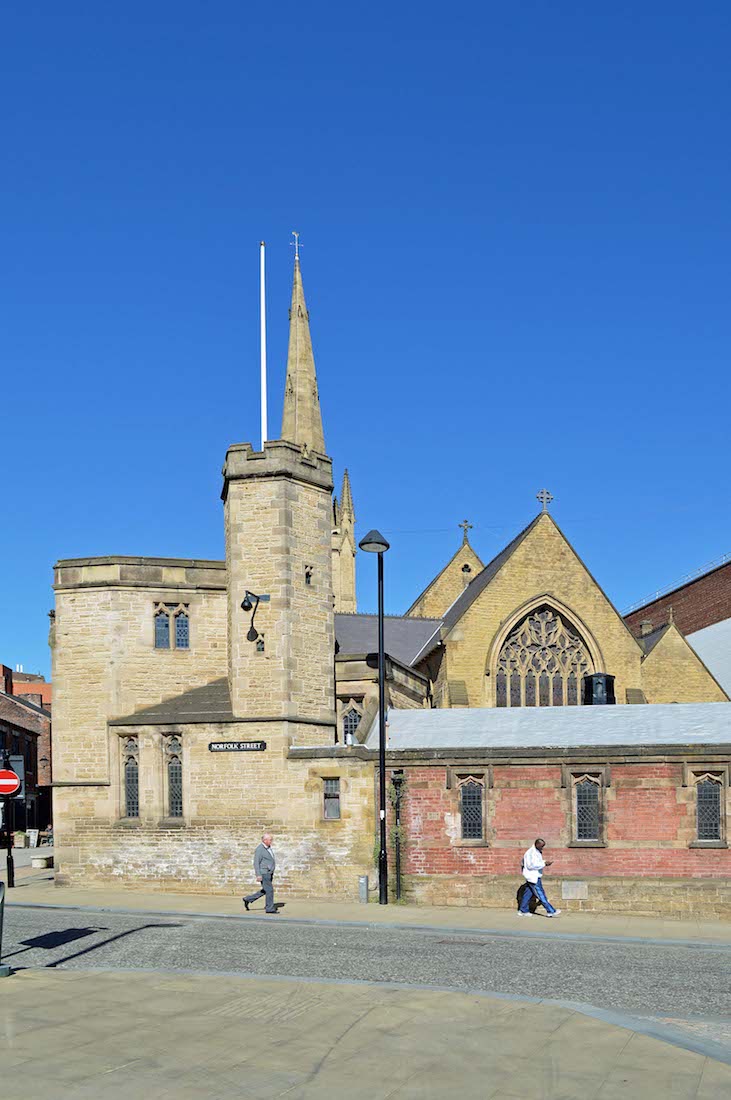
We are going to have problems circumnavigating this Cathedral because it is so closely surrounded by other buildings. This is a view of the Cathedral from the East in Norfolk Street. ••• The Cathedral Church of St Marie is the Roman Catholic Cathedral in Sheffield, England. It lies in a slightly hidden location, but signals its presence with a tall spire. It is an especially fine example of an English Roman Catholic Cathedral, with much fine interior decoration.. PLAN
2. LOOKING DOWN NORFOLK ROW
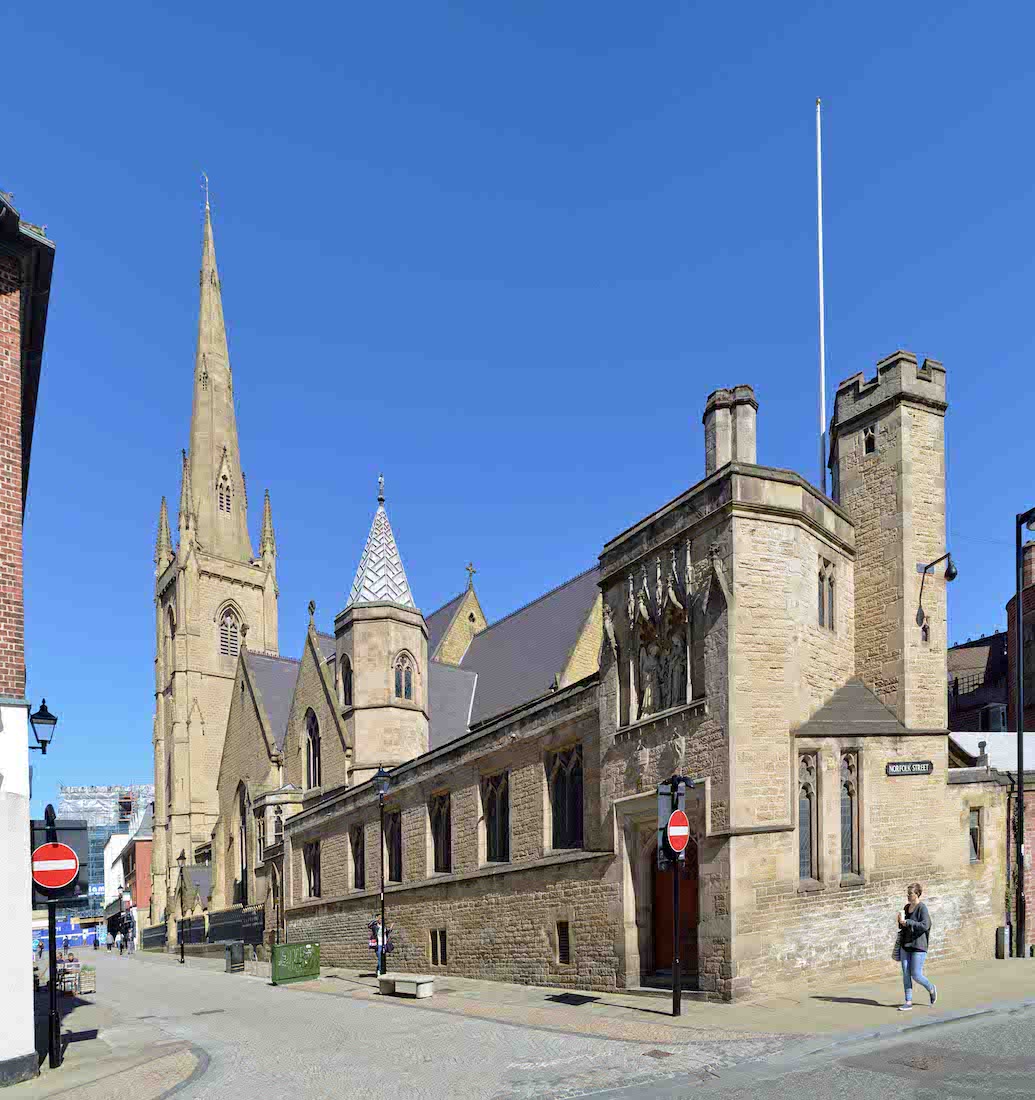
The Cathedral owns the property on this corner. I suspect the near buildings house administration. ••• The Catholic Emancipation of the late 18th and early 19th century allowed Catholics to worship openly. Sheffield Catholics bought an ageing house, which stood on the present site, and built a small chapel behind it. The names of the priests who served Sheffield before the Cathedral was built and the dates of their deaths are on the wall of the Mortuary Chapel.
3. CORNER TOWER
The tower on the corner has an Annunciation scene with the underlying text: ‘Ave Maria, Gratia Plena, Dominus Tecum’ (Hail Mary, full of grace, the Lord is with you’). ••• By 1846 the chapel was too small and the young priest, Fr. Pratt, was keen to build a church for the expanding town. A leading local architect called Matthew Ellison Hadfield designed St Marie’s. The church was expensively decorated with the aid of generous donations from the Duke of Norfolk, his mother and parishioners.
4. STEEPLE AND CHAPEL
Because of space restrictions, the Lady Chapel has a high position next to the South transept. ••• St Marie’s was completed and opened in 1850. It cost more than £10,500 – a huge sum in those days – and it was not until 1889 that the church was free from debt. The new church would be dedicated to St Marie, the Frenchifying (medievalising?) of St Mary being a favourite conceit of Pugin and his followers.
5. NICHE FIGURE
This niche figure is much weathered: my guess is a crowned St Mary (Marie) with model Cathedral and flowering sheaf. ••• The Parish of St Marie’s, which covered the whole of Sheffield, became part of the Diocese of Beverley in 1850, when Catholic dioceses were re-established for the first time since the Reformation. During the Second World War a bomb blew out stained glass windows in the Blessed Sacrament chapel.
6. SOUTH WALL ITEMS
These photos of the South wall are taken from Norwich Row. We note the figure of Christ, the South door, and some elaborate carved decoration and heads. ••• The remaining windows were removed and stored in a shaft at Nunnery Colliery. The mine flooded during the War, the glass sank in mud and drawings for re‑creating the windows were destroyed; however it was still possible to re-install the windows in 1947. When St Marie’s was re-ordered in 1970, following Vatican II, dark woodwork was removed and new lighting and benches were installed.
7. CATHEDRAL SIGN
A welcome sign gives details of the many services held during the week. What a warm welcome! ••• In 1972, a new nave altar was consecrated by Bishop Gerald Moverley, auxiliary Bishop of Leeds. The church building has been a Grade II listed building since 1973. In 1980 the new diocese of Hallam was created and St. Marie’s became a Cathedral. Bishop Moverley was installed as its first bishop and served until his death in 1996, after which Bishop John Rawsthorne became the second Bishop of Hallam.
8. VALLEY OF THE SHADOW
Weekday entry to the Cathedral is through the West door – not a very grand approach! ••• An extensive programme of renovations caused the Cathedral to close in September 2011, re-opening in November 2012. During the closure, the sanctuary was extended into the crossing and reordered, a new cathedra was installed and the choir moved to the West end of the building.
9. WELCOME SIGN
Close by the West door is this very attractive welcoming sign. ••• During the restoration process, side chapels and roofing were restored, in some cases revealing original features previously hidden. New heating and toilet facilities were also installed. Also a collection of Nottingham alabaster carvings, mostly originating from the 15th century, were discovered and underwent extensive restoration, finally going on display in the Cathedral cloisters in April 2017. [Note: I was unable to discover the Cathedral cloisters.]
10. WEST DOOR
And so to the West door, by which we make our entry. ••• Following the re-opening in November 2012, Bishop John Rawsthorne retired at the age of 78. In July 2014, Bishop Ralph Heskett was installed as the third Bishop of Hallam.
In recent years, the Cathedral has been developed as a place of significant public interest, and as an especially fine concert venue, having hosted many of the finest choral ensembles in the world.
11. NAVE
The first impressions on entering the Cathedral are light and space. Light streams in through the plain glass windows in the clerestory. The Gothic arches march towards the distant chancel and sanctuary, the blue nave roof is unusual, the baptismal font and ewer stand in the foreground, there are stained glass windows in the side walls. The expected symmetry though is broken here by the tower at our immediate right, and a more distant chapel in the left wall.
12. NAVE ROOF
The nave roof is of a very simple construction. The plain light blue rectangular panels are supported by simple arches. There are simple bosses covering the joins of the woodwork: these carry the insignia ‘M’ for Mary, or the Christogram ‘ihs’ – the first three letters in the Latinised Greek name for Jesus.
13. LOOKING WEST
Moving down the central nave aisle and looking back, we observe at centre the Great West Window above the West door, and the font before it. The base of the tower at left has a room beneath, and two memorials on the corner column. At right are two confessionals, or reconciliation rooms. We might also notice the text above the arches and the gleaming gold capitals atop the columns.
14. SOUTHWEST NAVE
The smart tower room takes the form of a neat and well cared for shop. Very impressive! There are two windows here. The South window at left has three lancets which depict Simon Peter the fisherman; the baptism of Jesus by John the Baptist; and St Jude. The West window at right also has three lancets which depict: Saint John-Baptiste de La Salle (1651 – 1719), founder of the Institute of the Brothers of the Christian Schools; St Oswald; and St Teresa of the Child Jesus (St Thérèse of Lisieux).
15. HADFIELD AND WWI MEMORIALS
There is a memorial on each of the two outward faces of the corner tower pillar. The memorial to the East remembers Charles Hadfield, a one-time president of the Sheffield Cathedral Council who died in 1916. On the North face is a memorial for those of the parish who gave their lives in action in the Great War of 1914-1918.
16. BAPTISMAL FONT
Right near the West door is the modern sandstone font used for baptism. Baptism is regarded as the rite of entry into the Christian life and the Christian Church. It is therefore symbolic that the font is placed close to the entry to the Cathedral.
17. WEST WINDOW
The large West window was designed by Pugin. It shows pairs of pictures reflecting Old Testament stories matched to their counterparts in the life of Christ. Between each row of scenes there are heads of various prophets.
18. NORTHWEST NAVE
In the Northwest corner of the nave are two confessionals or reconciliation rooms, in which congregational members have the opportunity to confess to a priest and receive absolution. The West window behind shows mothers bringing their children to Jesus. The North window at right shows three Catholic English martyrs: Bl Thomas Ford (or Belson?), Bl John Fisher (1469 – 1535), and Bl Philip Howard (1557 – 1595).
19. NORTH NAVE WALL I
The statue of the Virgin and Child above the north door came from the small Catholic chapel that stood on this site from 1816 until 1846. The window shows St Mary at left, and a king with prince (?) at right. The setting of the statue in the window is unusual.
20. NORTH NAVE WALL II
Making our way along the North nave wall we notice the attractive displays of Stations of the Cross with consecration candle in between. There is a further stained glass window before we come to the Mortuary Chapel.


